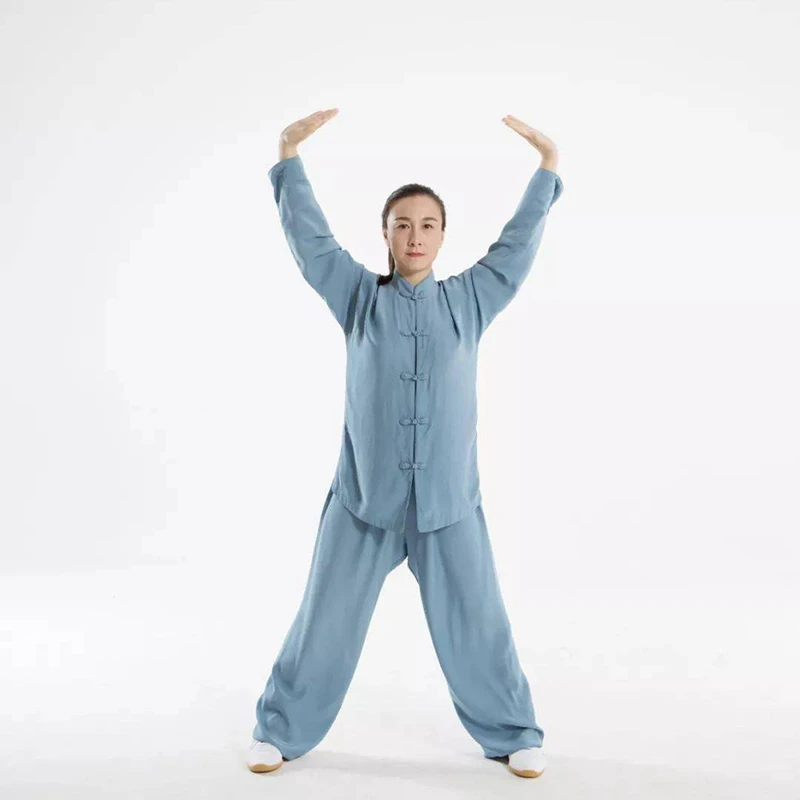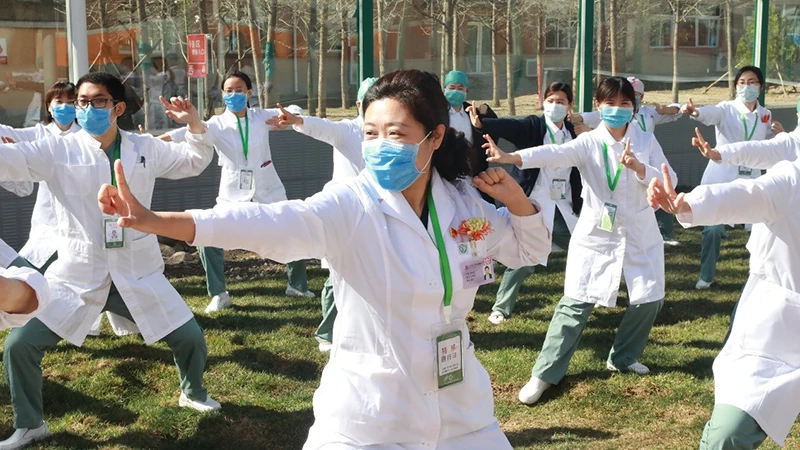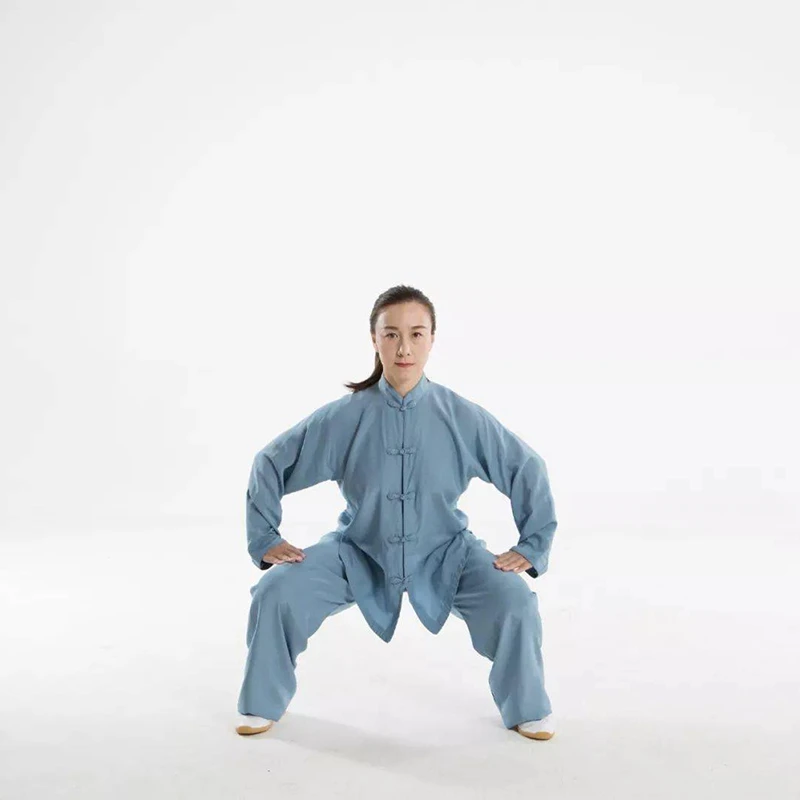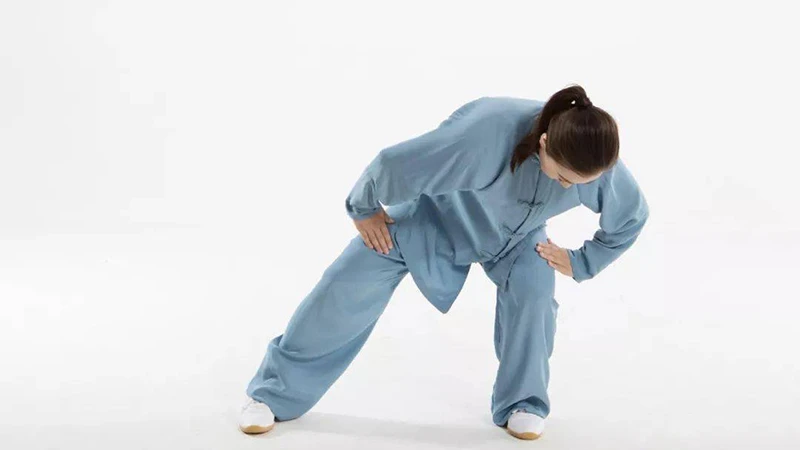The New Wave of Holistic Wellness
In recent years, young people have increasingly turned their attention toward traditional wellness practices, with Baduanjin (八段锦), an ancient Chinese qigong (气功) exercise, leading the charge. Once thought to be a favorite activity of the elderly, Baduanjin has gained immense popularity on social media platforms, where users regularly share how the practice transformed their lives. This once niche activity has now become a new trend in the fitness community.
But how did Baduanjin, an exercise known for its slow, meditative movements, captivate an entire generation typically associated with high-intensity workouts and fast-paced lifestyles?

A Gentle Alternative to High-Intensity Fitness
For those unfamiliar with it, Baduanjin consists of eight distinct movements that work to harmonize the body’s energy (or “qi”) and improve overall health. Unlike more aggressive forms of exercise like running or weightlifting, Baduanjin’s slow, deliberate movements are designed to calm the mind while gently working the muscles and joints. For many young practitioners, this provides a perfect balance between physical exertion and mindfulness.
This form of fitness has resonated deeply with today’s young adults, who often face overwhelming pressure from work, studies, and social commitments. Traditional forms of exercise can feel like another task on their long to-do lists, but Baduanjin offers an accessible, calming alternative that doesn’t require a gym membership or hours of time. It’s an antidote to the fast-paced world, offering a sense of relief from both physical and mental stress.
Moreover, the digital fitness landscape has made it easier than ever for younger generations to incorporate Baduanjin into their routines. From fitness apps to YouTube videos, this ancient practice has found a new home in the pockets of tech-savvy users. On social media platforms like Xiaohongshu and Bilibili, videos showcasing Baduanjin’s health benefits frequently go viral, with hashtags like #BaduanjinForHealth attracting millions of views.
Punk Health and Fragmented Wellness
Another reason Baduanjin has struck a chord with young adults is its compatibility with the rising trends of “punk health” and “fragmented wellness.” These terms refer to a lifestyle where people try to balance indulgence and self-care in quick, manageable bursts. For instance, it’s not uncommon for young professionals to stay up late working or socializing, only to compensate the next day by practicing mindful exercises like Baduanjin or drinking herbal teas.
For this demographic, traditional wellness practices like Baduanjin serve as a convenient way to reduce stress without disrupting their hectic schedules. It’s an appealing option for those who want to feel healthier without committing to long, high-intensity workouts. As such, many have found Baduanjin to be a perfect fit for their lives, incorporating it into brief morning or evening routines to feel recharged without the exhaustion of typical workouts.
In fact, the simplicity and adaptability of Baduanjin have fueled its popularity. The exercise can be done in small spaces, doesn’t require any special equipment, and can be completed in under 20 minutes, making it ideal for urban dwellers with busy lives. Whether performed in a park, living room, or even during a lunch break, Baduanjin offers flexibility that appeals to young people who are constantly on the move.
Celebrity Endorsements and Media Buzz
The influence of celebrities and social media influencers has also played a key role in Baduanjin’s rise among younger audiences. Celebrities like Zhao Liying (赵丽颖) and Jin Chen (金晨) have been spotted practicing Baduanjin on film sets, adding to its appeal. Their public enthusiasm for the exercise has helped to solidify its image as not just an activity for the elderly but a modern, trendy form of wellness.
In addition, platforms like Weibo and Douyin (TikTok) have seen numerous “Baduanjin challenges,” where users share their daily progress in performing the eight movements. These online communities offer support, encouragement, and an environment for young practitioners to learn and grow together. The viral nature of such content only adds to the movement’s momentum, making Baduanjin a social activity as much as a personal wellness practice.
A Cultural Renaissance in Wellness
Baduanjin’s newfound popularity among younger generations also points to a broader trend: the rediscovery of traditional cultural practices. As China’s youth navigate the complexities of modern life, there’s a growing sense of pride and curiosity in exploring their heritage. Wellness practices like Baduanjin, once seen as outdated, are being rebranded as valuable tools for improving health and mental clarity.
This cultural revival isn’t limited to Baduanjin. Practices like Tai Chi, Five Animal Frolics (五禽戏) , and even ancient dietary habits are seeing a resurgence among young people eager to reconnect with their roots. In an era where Western fitness regimes like CrossFit and Pilates have dominated the global landscape, this return to traditional Chinese wellness practices represents a unique blend of modernity and tradition.
Moreover, as young people face increasing pressures from work and society, the appeal of these practices lies in their focus on balance, harmony, and long-term health rather than quick fixes or extreme physical exertion. It’s not just about burning calories or building muscle; it’s about nurturing both the body and mind in a sustainable, holistic way. This shift aligns with the broader global movement toward mindfulness and wellness, emphasizing inner peace alongside physical health.
The Future of Wellness
The fusion of technology and tradition has also played a pivotal role in Baduanjin’s modern revival. Fitness apps like KEEP and online platforms such as Bilibili and Xiaohongshu now offer guided Baduanjin tutorials, making it easy for users to follow along at their own pace. Many of these platforms integrate AI to analyze posture and provide real-time corrections, blending ancient knowledge with modern innovations to maximize effectiveness.
Even virtual reality (VR) is stepping into the world of traditional wellness. At the 2023 Shanghai International Import Expo, Baduanjin was featured in virtual training simulations, allowing users to interact with digital instructors in immersive environments. This combination of cutting-edge technology and ancient wisdom is expanding the possibilities of traditional wellness, offering users new ways to engage with these practices on their terms.



